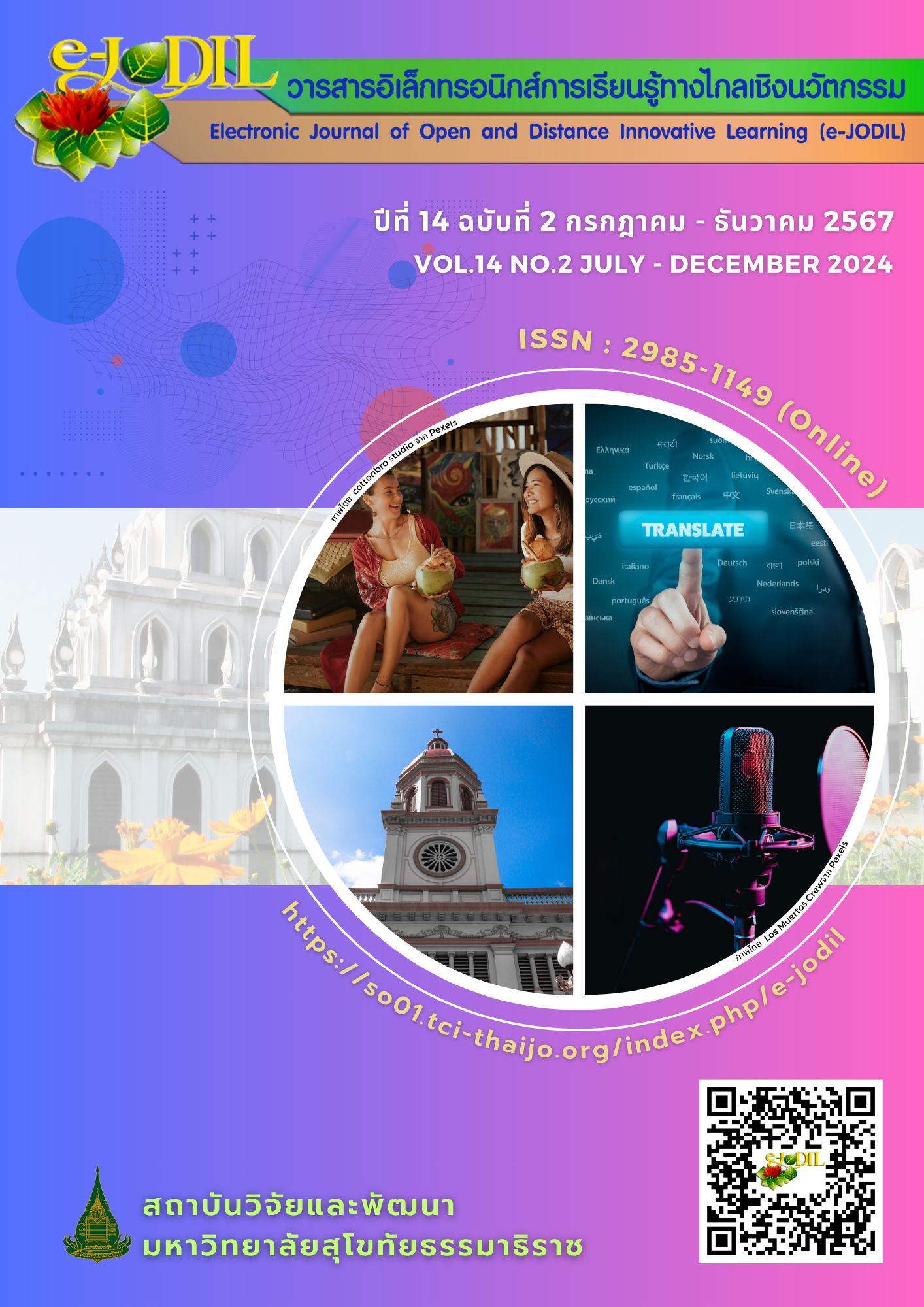The Study of Mobile Application for Korean Vocabulary Usage
Main Article Content
Abstract
This research aims to produce a Korean vocabulary mobile application by applying the technique of spaced repetition together with hypotheses regarding the frequency of the occurrence of words and the learning achievement in recalling words and their meanings. Thus, the mentioned application was used by Korean Language for Communication I students with the aim of achieving results in memorizing Korean vocabulary and meanings. This research is divided into 2 phases: in the first phase, the researcher developed a Korean vocabulary mobile application and collected the data by employing a questionnaire on the opinions of 62 people about the application. In the initial stage of the research analysis, the overall average opinion of the sample group was 4.45 (strongly agree). In the second stage, after classroom study, the researcher administered a pre-test on vocabulary recall and meaning to a sample group of 21 people using a mobile application for Korean vocabulary. The vocabulary errors made by the sample group were recorded individually.
The sample was then divided into two groups. Group 1, consisting of 11 people, used a Korean vocabulary mobile application to review vocabulary mistakes after class daily. Group 2, consisting of 10 people, did not use the Korean vocabulary mobile application for reviewing vocabulary mistakes after class. Seven days after the initial test, the researcher administered a second vocabulary and meaning test (post-test), which included the vocabulary errors from the first test for each individual. Using SPSS and the Paired Sample T-Test to compare the average accuracy in recalling vocabulary and meanings between Group 1 and Group 2, it was found that Group 1 (90.96%) had a significantly higher accuracy than Group 2 (57.39%) (Sig = 0.031, P<0.05). This indicates that using the Korean vocabulary mobile application after class for reviewing vocabulary significantly improved the ability to recall Korean vocabulary and meanings.
Downloads
Article Details

This work is licensed under a Creative Commons Attribution-NonCommercial-NoDerivatives 4.0 International License.
บทความ ข้อความ ภาพประกอบ ตารางประกอบ ที่ตีพิมพ์ในวารสารเป็นความคิดเห็นและความรับผิดชอบของผู้เขียนแต่เพียงผู้เดียว ไม่เกี่ยวข้องกับมหาวิทยาลัยสุโขทัยธรรมาธิราชแต่อย่างใด
บทความที่เสนอพิจารณาในวารสาร e-JODIL ต้องเป็นบทความที่ไม่เคยส่งไปลงพิมพ์ เผยแพร่ หรืออยู่ระหว่างการพิจารณาของวารสารอื่น
กองบรรณาธิการขอสงวนสิทธิ์ในการพิจารณาและตัดสินการตีพิมพ์บทความในวารสาร
References
Chaimongkol, T. (2022). Development of Instruction Package on Congruent and Incongruent Collocations of High-Frequency Verbs: Do, Get, Give, Have, Make, Take. The Golden Teak: Humanity and Social Science Journal, 28(2), 103-112.
Cho, A., & Yi, S. (2014). An Analysis on the Word Frequency and Word Repetition in Korean Elementary Textbooks. The Journal of Humanities Studies, 50(4), 261-287.
Cho, H. (2000). The Research of Korean Vocabulary Studies. Seoul: PIJBook.
Kobsirithiwara, P. (2020). Approaches to Develop the Glossary Part of Communicative Korean I textbook in the Faculty of Humanities Kasetsart University. Journal of Studies in the Field of Humanities, 27(1), 125-159.
Marketeer Team. (2022). Thailand in 2022: Thai People Have Computers and Smartphones in Almost the Entire Country. Retrieved October 12, 2023 form https://marketeeronline.co/archives/266656
Mingmuang, C., Arreerard, W., & Sanrach, C. (2022). Development of a Model for Multimedia Learning Activities on Mobile Technology using Spaced Repetition Technique. Electronic Journal of Open and Distance Innovation Learning, 12(2), 1-16.
White, A. R. (2019). A Social Media Based Learning System: An Investigation on the Use of the Line Application for Teaching and Learning English Vocabulary and Grammar at a Thai Public University. Journal of Social Sciences and Humanities Research in Asia, 25(3), 3-30.
Yi, S., Yi, C., & Seo, K. (2020). Korean Vocabulary Education Theory. Seoul: Hankookmunhwasa.

